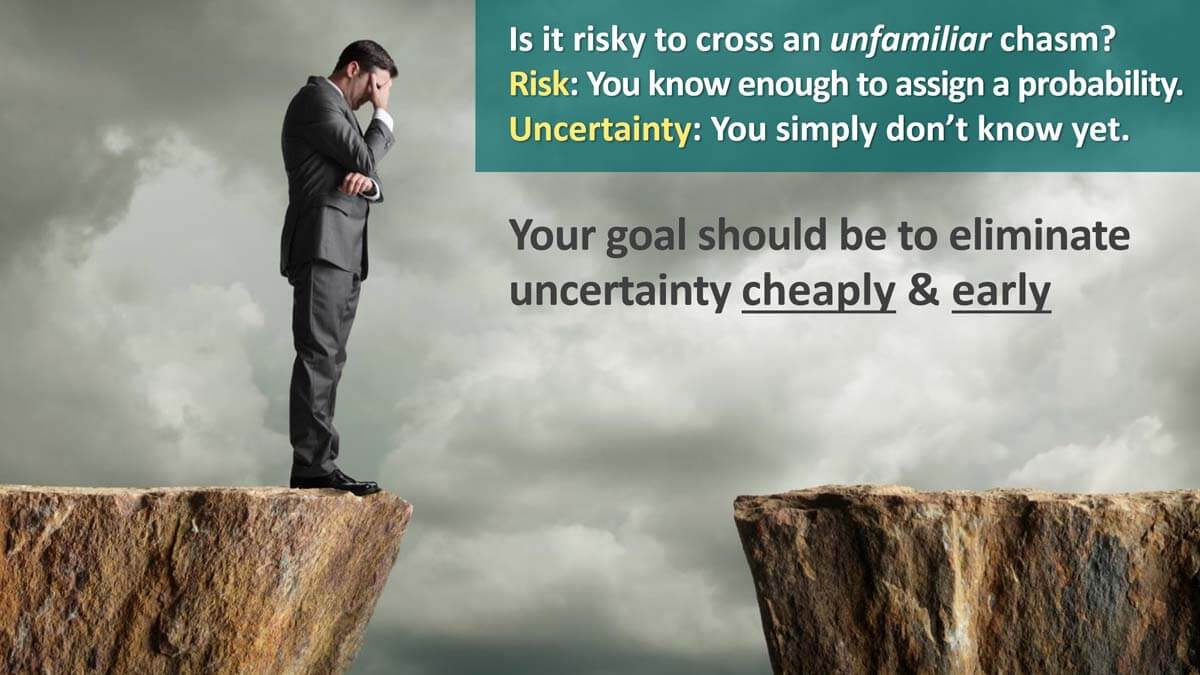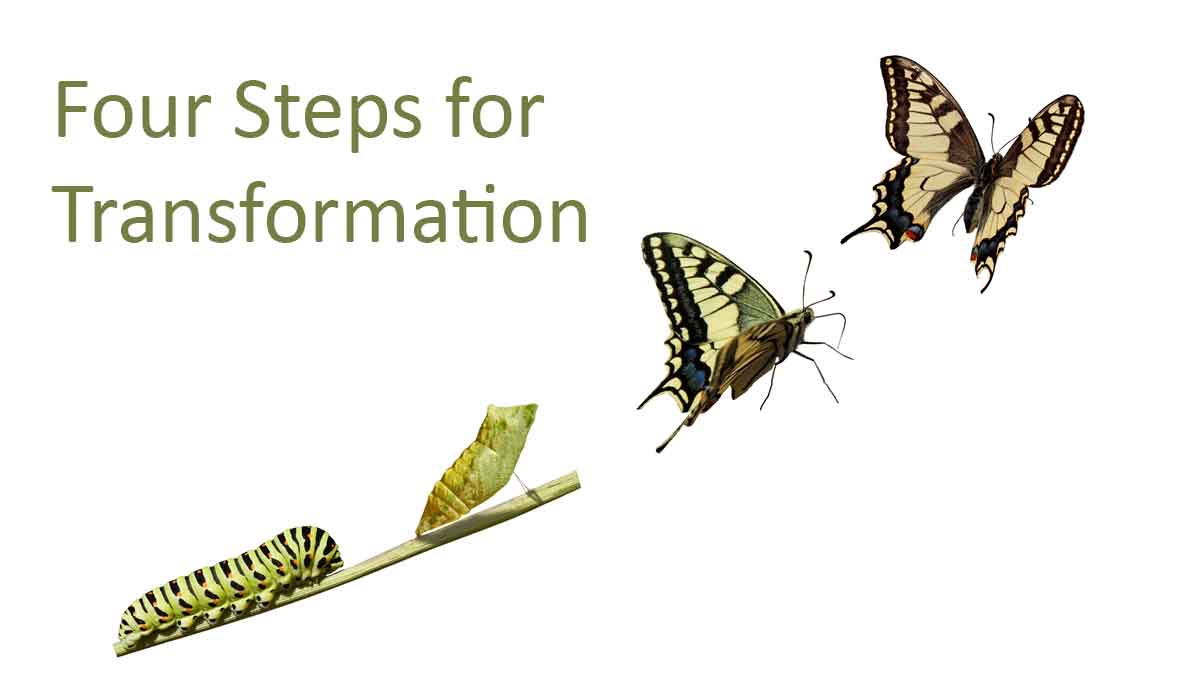Initially, you are aware of the first three, but completely unaware of the fourth—surprises. When you begin your project, list the first three, and try to convert A’s and Q’s into F’s. Then uncover the surprises through customer interviews, tours and observation. Seek to understand the first three, and discover the last one.
More in white paper, Innovating in Unfamiliar Markets (page 12)
You’ll have much better project reviews if they understand this difference. You can only assign a level of risk if you know the probability of an unfavorable event, e.g., 40% chance of a thunderstorm. It’s pointless—even misleading—to assign probabilities of success, net present values, and so forth in a project’s early phase. That comes later, after your team drives dozens of assumptions from uncertainty to certainty. The methodology for doing this isn’t difficult: Check out this 2-minute video at Why risk and uncertainty are different.
More in video, Project de-risking with Minesweeper® software
If your R&D looks like a black box to management, you’ve probably noticed that their patience can run out rather quickly. But when you de-risk projects transparently with management, they are much more tolerant of unavoidable delays and setbacks.
You do this in three steps: 1) Generate assumptions… possible landmines that could “blow up” your project. 2) Rate assumptions… for likely impact and certainty. 3) Investigate assumptions… especially high-impact, low-certainty assumptions. This 2-minute video explains the process: How to pursue transformational projects.
More in article, How to de-risk projects and overcome management doubt.
You know you’ve got a top-notch team exploring that unfamiliar market or technology when you see them… 1) identify all project assumptions at the onset, 2) detect and defuse unforeseen “landmines” (project killers) as early as possible, 3) advance the project rapidly without detours and distractions (or kill the project swiftly), and 4) spend funds investigating and pursuing only that which truly matters. The methodology for doing this is described in the short video at www.deriskprojects.com.
More in article, How to de-risk projects and overcome management doubt
If your big project is successful, it will be because the assumptions it rested on were true. But when you start your project, you don’t know what is and is not true. Think of 4 factors in descending certainty: 1) Facts (we know what we know.) 2) Assumptions (we know what we think.) 3) Questions (we know what we don’t know.) 4) Surprises (we don’t know what we don’t know.) To “de-risk” your project, lay these out at the beginning of your project… and then drive each from uncertainty to certainty.
To see how this is done, view the video at Project De-risking with Minesweeper
Confirmation bias is seeking and interpreting data in a manner that supports our pre-conceived notions. Most innovation processes treat confirmation bias with apathy, when the proper response is dread. You increase your exposure to confirmation bias when you 1) start projects with your solutions, not customers’ outcomes, 2) ask customers to “validate” your ideas, 3) fail to identify and test all assumptions, and 4) skip quantitative customer interviews.
More in article, Market Satisfaction Gaps… your key to B2B organic growth
Do your new product development teams deal only with facts? Or are “factoids” interspersed, cleverly hiding among the facts? The Oxford English Dictionary defines a factoid as “an item of unreliable information that is repeated so often that it becomes accepted as fact.” Better to clearly identify and separate your assumptions from facts at the onset of your project… and rigorously investigate the assumptions until your project is based on facts alone.
More in video De-risking Transformational Projects
Lean Startup methodology refers to “Leap of Faith Assumptions,” and recommends testing assumptions with customers at the first opportunity. For B2B, this “first opportunity” to learn comes before a prototype is created… through VOC interviews to mine the foresight of knowledgeable customers. Don’t miss this B2B adjustment to Lean Startup.
Read more in this white paper, Lean Startup for B2B (page 6).
Initially, you are aware of the first three, but completely unaware of the fourth—surprises. When you begin your project, list the first three, and try to convert A’s and Q’s into F’s. Then uncover the surprises through customer interviews, tours and observation. Seek to understand the first three, and discover the last one.
More in white paper, Innovating in Unfamiliar Markets (pages 12-13).









